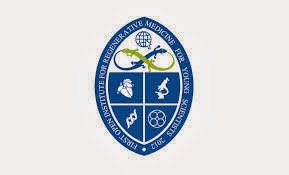The revolution in information
technology has irreversibly changed our lives over the past two decades.
However, advances in biomedicine stand poised to eclipse the social and economic
effects of IT in the near future.
“People are living
longer, healthier lives, and this longevity boom is not going to stop any time
soon. If we're to get to grips with the implications this will have for
national economies, pension funds and society at large, we urgently need
economic analysis of this trend. This paper is an insightful step in the right
direction.”, - said Steven Burrill,
CEO of Burrill & Co.
“Governments, pension funds and individuals that have
the adaptive life span and life expectancy expectations based on historic
trends are likely to be unprepared for these paradigm shifts. We proposed a set
of parameters that may be used in several models of economic growth to account
for these scenarios both in the transitionary period and in the long run.”,
said Maria Litovchenko, the research
associate at the Biogerontology Research Foundation and the graduate student at
the Ludwig Maximilian University of Munich.
Biomedical innovations typically
reach the mass market in much slower fashion than those from information
technology. They follow a paradigm where neither demand, in the form of the
consumer, nor supply, in the form of the innovator, can significantly
accelerate the process.
However,
in the near-term, unless the governments of the debt-laden developed countries
make proactive policy changes, there is a possibility of lengthy economic
decline and even collapse.
“John Maynard
Keynes once said that in the long run we are all dead. Our model looks at the
scenario, where some of us are alive in the long run. It also suggests that to
grow the economy we need to make proactive policy changes and accelerate aging
research as well as the propagation of biomedical advances from the laboratory
into clinical practice.”, said Alex
Zhavoronkov, the director of the Biogerontology Research Foundation.
“The contributions to life expectancy gains are
blurred by the unhealthy behavior and environmental factors. However, in the
near future we may see a revolution in longevity and we can either prepare for
and accelerate the change or continue stimulating the economy using the
Keynesian, monetarist or traditional neoclassical policies, run deeper into
debt and face the dire consequences.”, he added.
The proposed model takes into account progress in the
biomedical sciences, which in turn affects the size, growth and productivity of
the population. In the model, the rate of biomedical progress is the sum of the
rejuvenation rate, the rate at which the functions required to perform useful
work that were lost to aging or disease are restored, and non-rejuvenating
rate, which increases lifespan, but does not restore lost functions.
Joe Betts-lacroix, the executive director at
Health Extension, said about the research: "A common concern about the
dissemination of anticipated health-extending technologies worldwide is
overpopulation. However, only countries
with low medical security have population growth. Health-extending technologies will travel
with overall medical technologies, and these will only reach countries as their
incomes rise and their birth rates fall. In the western world, lower birth
rates are automatically working to correct overpopulation. As reproductive
lifespans increase (the maximum age at which women can give birth), women will
wait longer to have their children, and population will continue to be
regulated at a sustainable level."
The effects of
population aging on economic growth remains a controversial topic in
macroeconomics with conflicting schools of thought. While there are many models
and simulations that account for population aging, new parameters introduced in
this research may help enrich the models demonstrating both positive and
negative effects of aging on the economy and help model scenarios that go
beyond extending historic trends in longevity.
Commenting on
the announcement Dr Joao Pedro de
Magalhaes, researcher at the University of
Liverpool, said: “With the graying of the world's population, and the massive resulting
social and economic challenges, this type of work is very timely. A very
important message from this work is that economists should take into account
technological progress when making forecasts. This work also further emphasizes
the absolute need for research on aging and rejuvenation to develop
interventions that extends healthy lifespan which would result in unprecedented
medical, social and economic gains.”






